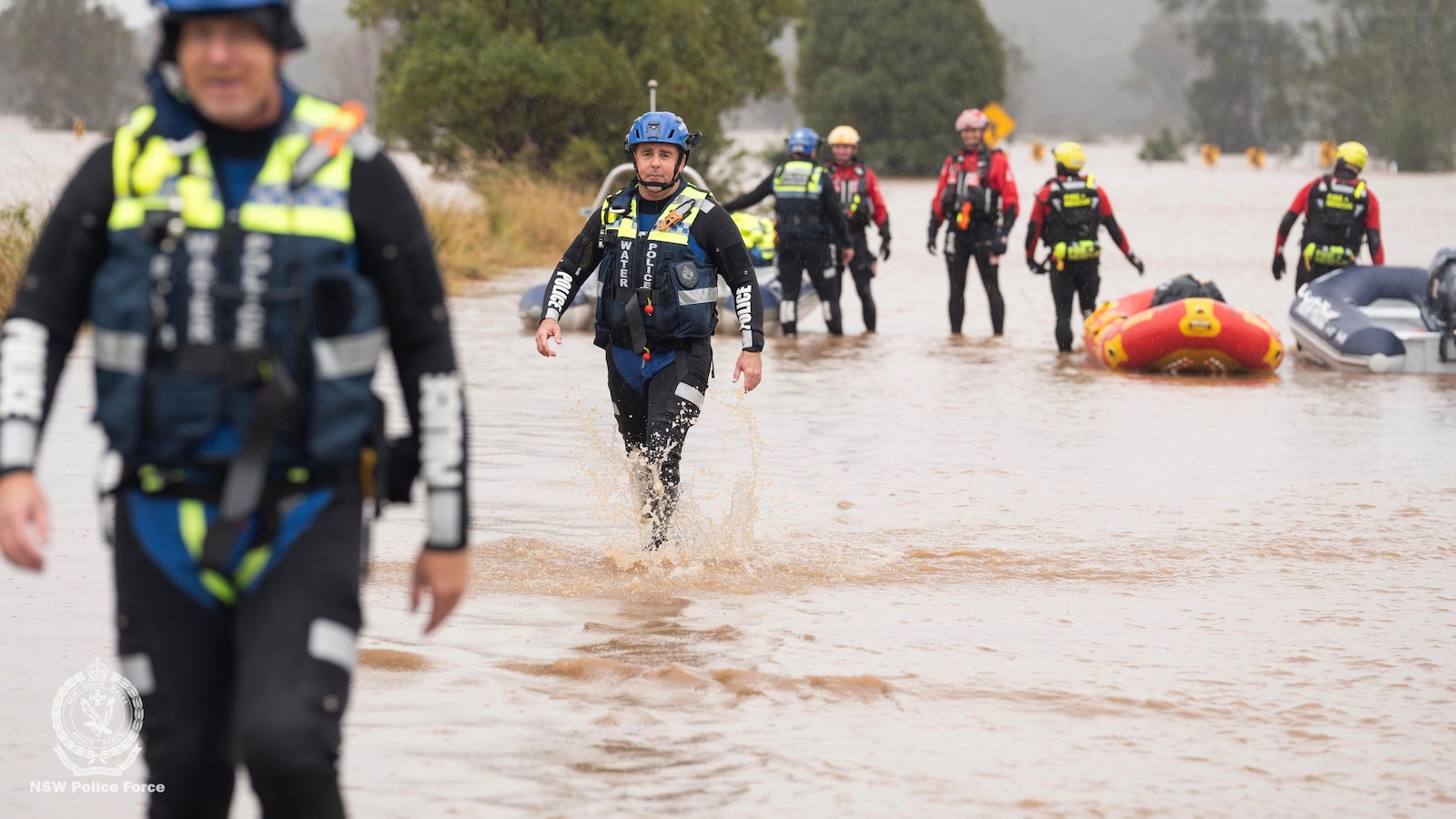“Army Strong” is more than just a tagline — for soldiers, it’s a requirement for duty.
The U.S. Army requires that all active-duty soldiers prove their physical prowess by passing a rigorous fitness test. There have been multiple versions of the test over the years — and the Army recently announced that a new version has been adopted.
On June 1, 2025, the military branch will roll out its new Army Fitness Test (ACFT) as a replacement for the current Army Combat Fitness Test (ACFT).
WALKING CERTAIN NUMBER OF STEPS DAILY REDUCES CANCER RISK, OXFORD STUDY FINDS
The new test — which is based on “18 months of data analysis and feedback from thousands of test iterations” — will introduce updated scoring standards that emphasize “readiness and combat effectiveness,” according to an Army press release.
Soldiers will have until Jan. 1, 2026, to meet the new AFT requirements without facing “adverse actions.”

The U.S. Army requires that all active-duty soldiers prove their physical prowess by passing a rigorous fitness test. (iStock)
AFT scores are recorded during basic training for soldiers and initial training for officers, the Army states on its website.
Active-duty soldiers are required to complete the test twice a year, while soldiers in the Army Reserve and Army National Guard must record scores once a year.
EXERCISE CAN PREVENT COGNITIVE DECLINE EVEN WHEN ENERGY LAGS, RESEARCHERS DISCOVER
“The AFT is designed to improve soldier readiness and ensure physical standards [and] prepare soldiers for the demands of modern warfare,” said Sgt. Maj. Christopher Mullinax, senior enlisted leader, deputy chief of staff for Operations, Army Headquarters, in the release.
“It emphasizes holistic fitness over event-specific training and is grounded in performance.”

Recruits undergo physical training in the training center of The Third Separate Assault Brigade on September 14, 2024, in Dnipro, Ukraine. (Getty Images)
Scoring requirements are more demanding for the new test, with soldiers in combat roles held to the highest standards.
“Combat standards are sex-neutral for the 21 direct combat roles, a change designed to ensure fairness and operational readiness,” the release states.
5 components of the test
The AFT consists of the following five events, as described on the Army’s website.
1. Three-repetition maximum deadlift
In this challenge, the soldier must lift the maximum weight possible three times using a 60-pound hex bar and plates.
This move assesses muscular strength, balance and flexibility.
“It’s doable — but only with smart, progressive training.”
“Deadlifts require a person to recruit glute and hamstring strength in order to lift a barbell off the ground to waist height,” said Miles Hill, a certified personal trainer and boxing instructor at Rumble in New York City. “It is the most effective technique for picking heavy weights off the ground.”
The deadlift can also be dangerous for civilians if they use improper form, warned Dr. Hooman Melamed, an orthopedic spine surgeon and sport medicine expert from Beverly Hills.

Army soldiers must complete a timed two-mile run on a flat outdoor course in a test of aerobic endurance. (iStock)
“If your posture or form is off, the risk to your lower back and hips is high — it could be a career-ending injury for some,” he told Fox News Digital.
2. Hand-release push-up
The soldier must complete as many hand-release push-ups as possible in two minutes, using proper technique.
“Hand release push-ups require a person to drop all the way to the ground, lift their hands in the air for a second, and then push themselves back up to high plank,” said Hill, who is also a second-degree black belt in Taekwondo.
NYPD DETECTIVE SHARES GRUELING WORKOUTS TO MOTIVATE COPS TO GET IN SHAPE
Melamed noted that while hand-release push-ups are great for building upper body strength, if the person is not already strong, the sudden force can damage the shoulders.
The hand-release push-up tests muscular endurance and flexibility.
3. Sprint-drag-carry
With the sprint-drag-carry (SDC), the soldier is tasked with completing five 50-meter shuttles (sprint, drag, lateral, carry, sprint) as quickly as possible, using two 40-pound kettlebells and a 90-pound sled.
“The sprint-drag-carry is probably the toughest sequence here, since it requires explosive strength, muscular endurance and cardiovascular endurance,” Hill said.

“Combat standards are sex-neutral for the 21 direct combat roles, a change designed to ensure fairness and operational readiness,” the Army’s release states. (Cecilie_Arcurs)
Melamed calls the SDC a “brutal test of speed and explosive power.”
“If you’re not conditioned, tearing a hamstring or pulling something mid-run can happen,” he said.
4. Plank
The soldier must maintain a proper plank position for as long as possible, testing muscular endurance and balance.
“A plank is an ultimate test of core strength and endurance, as it requires a person to hold their body weight for as long as they can,” said Hill. “It can be challenging, but it is the time requirement that determines the challenge.”
CRUNCHES BY AGE: HERE’S HOW MANY YOU SHOULD BE ABLE TO DO
Melamed noted that while this move looks simple, holding a proper plank for time is extremely challenging. “It exposes weaknesses in the back, core and shoulder girdle.”
5. Two-mile run
The soldier must complete a timed two-mile run on a flat outdoor course in a test of aerobic endurance.
“Two-mile runs are relatively easy for any able-bodied human — however, the time constraints are what makes it challenging,” Hill said.

With the sprint-drag-carry (SDC), the soldier is tasked with completing five 50-meter shuttles (sprint, drag, lateral, carry, sprint) as quickly as possible, using two 40-pound kettlebells and a 90-pound sled. (iStock)
The standing power throw event, which was part of the previous version of the test, is no longer included as a requirement.
“We eliminated the standing power throw because it wasn’t effectively promoting fitness and readiness as well as we would like,” Mullinax said.
“Furthermore, it presented an elevated risk of overuse injury and encouraged soldiers to focus on technique rather than demonstrating true power.”
How tough is it?
The toughness of a workout or fitness test is relative to the overall fitness of an individual, according to Dr. Jason Perry, M.D., primary care sports medicine physician with Baptist Health Orthopedic Care in Deerfield Beach, Florida.
STAY FIT IN YOUR 40S AND BEYOND WITH THESE SMART WORKOUT TIPS
“Generally speaking, the AFT is challenging, but not impossible for the average person with a basic fitness foundation,” Perry, who is unaffiliated with the Army, told Fox News Digital.
“It’s designed to test full-body strength, muscular endurance, speed, agility and cardiovascular stamina — all elements essential for combat readiness, but also relevant to functional fitness for civilians.”
CLICK HERE TO GET THE FOX NEWS APP
Compared to a typical gym workout, the AFT is more demanding because it combines different physical domains into one test, he said.
“Compared to elite athletic training, it’s moderate — but not easy,” Perry added.

In the three-repetition maximum deadliftIn this challenge, the soldier must lift the maximum weight possible three times using a 60-pound hex bar and plates. (iStock)
For civilians who regularly strength train, run or do functional workouts (like CrossFit or HIIT), this test is well within reach, he said.
For a civilian who exercises three to four times a week, the AFT is “realistically achievable” with focused training over an eight- to 12-week period.
CLICK HERE TO SIGN UP FOR OUR HEALTH NEWSLETTER
“About 30 to 50% of healthy, recreationally active adults could likely pass it with little to moderate training,” he predicted. “Sedentary adults or those with chronic conditions would have a harder time and would likely need a focused eight- to 12-week (or possibly longer) conditioning plan to pass.”
Melamed wasn’t quite as optimistic, estimating that less than 5% of civilians could pass the AFT.
“If you try this unprepared, you could get seriously hurt.”
“These aren’t weekend-warrior workouts — this is military-level conditioning,” he told Fox News Digital. “You have to work your way up to this level of intensity training.”
The expert also noted that there is a mental component to the test, but said mindset alone isn’t enough.
For more Health articles, visit www.foxnews.com/health
“If you try this unprepared, you could get seriously hurt,” he cautioned. “It’s doable — but only with smart, progressive training. You have to work up to it gradually.”
“And this test is as much about strategy and recovery as it is about raw strength.”
army-unveils-tougher-fitness-test-experts-weigh-in-on-difficulty













Leave a Reply